Posted by Elena del Valle on November 27, 2007

Karen Garnik, chief marketing officer for Rums of Puerto Rico
Photo: Rums of Puerto Rico
Rums of Puerto Rico launched “Here,” a new $2.2 million marketing and advertising campaign in the United States developed by Group LIH in Puerto Rico, in late October. No termination date, media outlets or information regarding which cities or markets the campaign will reach were disclosed.
The campaign consists of ten 15-second television commercials produced by Alfa Recording Studio in San Juan. Each spot will feature a Puerto Rican celebrity speaking about a different aspect of Puerto Rican rum such as the history, tradition, location, quality, leadership in sales and versatility of rum. The ads show celebrities holding a rum cocktail such as piña colada, rum and cola and mojito at various locations in Puerto Rico. The campaign includes messages on responsible drinking and choosing a designated driver.
Featured celebrities include: Wilo Benet, restaurateur and owner of Pikayo and Payá restaurants in San Juan; Latin Grammy Award winners David Sanchez, saxophonist and Nestor Torres, flutist; Lisa Thon, fashion designer; Melina Leon, singer and Latin Billboard Award winner; Alberto Marti, environmentalist; Kristina Brandi, Olympic athlete and professional tennis player; Mariem Pérez and Carlos Ruíz, motion picture directors; Shirley Rumierk, actress; and Quetzacoatl, painter.
“We want to communicate that Puerto Rican rum is of the highest quality and offers more versatility for mixing than any other spirit, both as an ingredient for cocktails and for cooking. The ads are meant to show rum enjoyed by sophisticated consumers who appreciate top shelf spirits in the most fabulous locations. The audience will be dynamically transported to our Caribbean paradise in these ads and presented with appetizing rum cocktails by our spokespersons: highly talented and respected artists, athletes, designers and socially and environmentally conscious individuals who are of Puerto Rican descent, to help us portray the unique qualities of Puerto Rico both as a rum producer and as a rum destination,” said Karen Garnik, chief marketing officer for Rums of Puerto Rico.
“Best in Class Hispanic Strategies” audio recording


Presenters Carlos Santiago and Derene Allen
-
Find out what makes 25 percent of the top 500 Hispanic market advertisers out perform the remaining companies
-
Discover what questions to ask, steps to take to be a Best in Class company
Click here to buy “Best in Class Hispanic Strategies” audio recording
Puerto Rican rums are aged a minimum of one year in charred white oak barrels. Gold and dark rums are aged longer to give them a smooth balanced taste. According to Adams Beverage Group, rum is the second largest spirit category in the U.S. after vodka. Seventy-five percent of all rums sold in the U.S. come from Puerto Rico, totaling over 15 million cases. Three of the five top selling distilled spirits sold in the U.S. are rums from Puerto Rico: Bacardi, Captain Morgan and Castillo.
“Seven out of every 10 bottles of rum sold in the U.S. are from Puerto Rico. Sales in the U.S. from Bacardi and Captain Morgan alone represent three-quarters of all rum sold in the U.S. Puerto Rico is by far the market leader in this spirit category,” said Garnik.
Although the campaign is not identified in promotional materials as specific to Latino consumers and no details were released regarding the percent of the Hispanic market that purchases rum; in conjunction with the advertising launch, Rums of Puerto Rico is hosting events in three of the top Latino markets in the United States, New York, Miami and Los Angeles.
Company plans include a Rum Academy for bartenders led by mixologists Steve Olson, partner in Beverage Alcohol Resource (BAR), for the New York event; and Tony Abou-Ganim, The Modern Mixologist, for Miami and Los Angeles. Evening cocktail receptions will feature performances by jazz artists Nestor Torres in Miami and William Cepeda in New York. Chef Wilo Benet plans to prepare dishes made with rum as an ingredient.
Rums of Puerto Rico, a division of the Puerto Rico Industrial Development Company (PRIDCO), was created in 1948 to promote the sale of all rums shipped from Puerto Rico to the mainland U.S. Rums of Puerto Rico sponsors events in collaboration with the Puerto Rico Tourism Company.
“Beyond the 30 Second Spot” audio recording
Listen to a 105-minute discussion




Panelists Ivan Cevallos, Hunter Heller, Kitty Kolding and Cynthia Nelson
Our panel of national experts discuss
• Challenges of measuring the impact of the 30-second ad spot
• Innovative tools are useful to reach Latinos
• Changes in marketing to Hispanics
• On which market segment are the changes most relevant
• Effects of technology and time shift on consumer behavior
• Role of multi-screens
• Getting started
• Tips for marketing professionals
Click here to find out about Beyond the 30 Second Spot
Posted by Elena del Valle on November 13, 2007

Mariela Dabbah, campaign spokesperson, McDonald’s
Photo: McDonald’s
McDonald’s teamed up with the Hispanic Scholarship Fund to offer five Steps For Success College Workshops to encourage greater Hispanic college enrollment. The free workshops are designed to provide parents and students with information about the college application process, including financial aid and how to apply for scholarships.
The campaign which promoters hope will reach 25 million people will rely on a media tour with spokesperson Mariela Dabbah. Other campaign tools are promotional flyers and posters distributed at local community events, local community organizations, and schools, calendar listings in newspapers, public service radio announcements, and online information including bylined articles by Mariela Dabbah, vignettes of workshops, and scholarship information. Steps for Success College Workshop are planned in Baldwin Park, California; Chicago, Illinois; Newark, New Jersey; San Antonio, Texas; and Tampa, Florida.
“Since the establishment of the RMHC/HACER Scholarship Program in 1985, McDonald’s has been a strong supporter of college education for Hispanics. We recognize that for many Hispanic parents and students, attaining a college education is a dream,” said Cristina Vilella, director of Marketing, McDonald’s USA. “These workshops offer the tools and information they need to make that dream a reality and to learn about the many scholarship programs available like RMHC/HACER, a program of Ronald McDonald House Charities and its local U.S. Chapters.”
The bilingual Steps for Success College Workshops will include a session for parents led by Dabbah, author of Help your Children Succeed in High School and Go to College, A Special Guide for Latino Parents. Workshop participants may receive a free copy of the book.
“Latino Family Dynamics” audio recording


Brenda Hurley and Liria Barbosa
Discuss
- Latino purchasing habits and products they favor
- Latino family characteristics
- Latinos and extended families
- Division of duties, responsibilities within the family
- Who is the decision maker in the Latino family
- Who is the information provider in the Latino family
Click here to find out about Latino purchasing habits and “Latino Family Dynamics”
“Latino parents want the best for their children but many times they are not familiar with how to help them get into college and how to pay for it. These workshops take the mystery away and instill both parents and students with the confidence and tools they need to navigate the process successfully,” said Dabbah.
The Steps for Success College Workshops will also introduce students and parents to the RMHC/HACER Scholarship Program. RMHC/HACER is one of the largest educational scholarship programs for Latinos in the country, and has awarded over $15 million in scholarships since its inception in 1985.
“The goal of these workshops is to guide parents and students, many of whom will be the first in their families to go to college, through the maze that is the college admissions process,” said Christopher E. Jones, chief operating officer, Hispanic Scholarship Fund.
McDonald’s USA, LLC, is a leading fast food provider in the United States. More than 80 percent of McDonald’s 13,700 U.S. restaurants are independently owned and operated by local franchisees. Ronald McDonald House Charities, a non-profit, 501 (c)(3) corporation, creates, finds and supports programs to improve the health and well being of children. Ronald McDonald House, Ronald McDonald Family Room, and Ronald McDonald Care Mobile program, are the organization’s main programs.
The Hispanic Scholarship Fund (HSF) supports Hispanic higher education. Founded in 1975 as a 501(c)(3) non-profit organization, HSF’s vision is to strengthen the country by advancing college education among Hispanic Americans. In its 32-year history, HSF has awarded more than 82,000 scholarships worth more than $221 million to Latinos from all 50 states, Puerto Rico, Guam and the U.S. Virgin Islands.
Listen to Cesar Melgoza discuss
“Changing Latino Landscape” audio recording

Presenter Cesar Melgoza, managing director, Latin Force Group
Find out about
• How demographic, social, political and economic factors affect Latinos
• Number of Hispanics in U.S.
• Hispanics as a percent of the mainstream population
• Number of Puerto Ricans in Puerto Rico
• Hispanics, including Puerto Rico, as a percent of U.S. mainstream
• Number of Asians and African Americans
• Estimated size of Hispanic market by 2012
• Percentage growth of new Hispanics per year
• Number of counties where Latinos are majority
• Areas of significant Latino growth
• Area of U.S. with a 950 percent Latino growth
• Role of acculturation
• Hispanicity segmentation
Click here for information on the Changing Latino Landscape
Posted by Elena del Valle on November 6, 2007
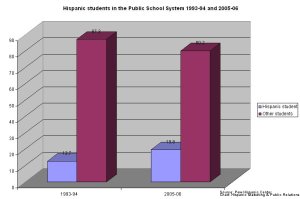
Click on image to enlarge
Interaction between diverse groups of ethnic students may influence students’ attitudes and perhaps future behavior. How desegregated are public schools today? A recent analysis of 93,845 public school enrollment data by the Pew Hispanic Center revealed some interesting findings. The Center examined ethnic make up in public schools between 1993-94 and 2005-06 and discovered that while non Hispanic white students were less isolated from minority students black and Hispanic students became a little more isolated from non Hispanic white students.
The apparently contradictory statement can be explained, according to Rick Fry, a senior research associate at the Pew Hispanic Center and the author of the analysis, by looking at the overall demographic trends affecting schools during those years and how they affected the system. The report concludes that in nearly every state non Hispanic white students became more exposed to minority students since 1993-94. At the same time, in many states minority students are less exposed to non Hispanic white students.
His review indicates an increase of Hispanics in the public school system greater than 55 percent. In 2005-06, Latin students represented almost one fifth (19.8 percent) of public school students compared to 12.7 percent twelve years earlier.
“Latino Family Dynamics” audio recording


Brenda Hurley and Liria Barbosa
Discuss
- Latino purchasing habits and products they favor
- Latino family characteristics
- Latinos and extended families
- Division of duties, responsibilities within the family
- Who is the decision maker in the Latino family
- Who is the information provider in the Latino family
Click here to find out about Latino purchasing habits and “Latino Family Dynamics”
Because non Hispanic whites represent a lesser percent of students in public schools than in the past, they are more likely to come in contact with minority students. While in 1993-94, 34 percent of non Hispanic white students attended a nearly all-white school (according to the Pew report “nearly all-white” meant a school with less than 5 percent non-white students); by 2005-06, only 21 percent of non Hispanic white students was attending a nearly all-white school.
Today, minority students are less likely to be exposed to non Hispanic white students than in previous years. In 2005-06, 29 percent of Hispanic and 31 percent of black students attended nearly all-minority schools (Pew defines a “nearly all-minority” school as one in which fewer than 5 percent of the students are non Hispanic white). In 1993-94, 25 percent of Hispanic students and 28 percent of black students attended all-minority schools.
The researchers based their findings on data from the U.S. Department of Education Common Core of Data (CCD) Public School Universe Survey. The Pew Hispanic Center, an initiative of the Pew Research Center, is a non-partisan, non-advocacy research organization based in Washington, D.C. The Pew Hispanic Center is funded by The Pew Charitable Trusts.
Target Latinos effectively by anticipating changes in the market with
“Hispanic Projections with 2007-08 update” audio recording

Presenter Roger Selbert, Ph.D.
Find out
- About Latino buying power growth in the future
- How Latino market growth compares with other markets in the U.S.
- What drives the rise of Latino economic clout
- Who should target the Latino market
- What is the size of the Hispanic affluent market
- If the luxury Latino market is growing
Stay ahead of your competion with “Hispanic Projections”
Posted by Elena del Valle on November 2, 2007
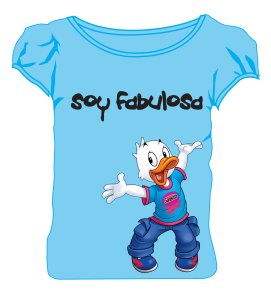

Duck and Lulu t-shirts
Photos: Palomita
Mexican entrepreneur, Molly Robbins and her company LicenZing LLC, launched Palomita, a new junior and girls fashion brand for Hispanics at the Magic show in Las Vegas earlier this year. Robbins secured exclusive rights to use trademarks and vintage art from various Latino companies, including the logos and characters, for to junior and girls apparel. Relying on nostalgic art from Latin America, the brand is designed to appeal to Hispanic women of all ages, an underserved market segment, with the company motto “Por fin una marca para ti” (Finally a brand for you).
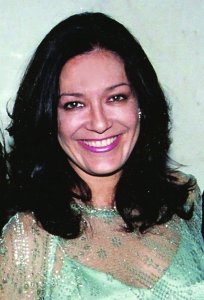
Molly Robbins, Palomita founder
Based in San Rafael, California, Palomita features designs from fruit drinks of Pascual Boing, clothing detergents Zote and Roma, Topo Gigio the puppet mouse, and pastries from Bimbo. The items are manufactured by Wish Licensing in Central America of cotton and rayon mix, and some in 100 percent cotton.
“We have also focused on the strength of the social media; we have a My Space, work with blogs, and an array of Latino news web sites. We participate in events such as the Miss Universe Pageant, MTV Latino Awards 2007, Tri City pageant etc.,” said a company spokesperson about Palomita’s promotional efforts. “We have worked with radio stations such as Bloomberg news and local 1010 am radio; we also work with Latino news papers nationwide; finally we have strategically placed ads in magazines nationwide. We are where Latinos are, everywhere.”
“Emotional Branding: How to capture the heart and mind of the Hispanic consumer” audio recording


“Emotional Branding” was recorded January 2007 during the Strategic Research Institute 13th Annual Blockbuster Marketing to U.S. Hispanic and Latin America conference in Miami, Florida. Receive a free downloadable copy by completing our Visitor Survey.
Click here for your free copy of Emotional Branding
The company website offers t-shirts, pajamas ($20) and market bags ($24) for sale. Palomita clothes are available at JCPenney, Sears Mexico and online. Mervyns and Wal-Mart are considering carrying the Palomita line.
A line with masculine designs and products from cement companies, tire manufacturers, beverage and confection makers, Chucho, will be launched early next year. The initial launch will have 10 to 15 designs in an assortment of colors for buyers to choose from.
“Latino Family Dynamics” audio recording


Brenda Hurley and Liria Barbosa
Discuss
- Latino purchasing habits and products they favor
- Latino family characteristics
- Latinos and extended families
- Division of duties, responsibilities within the family
- Who is the decision maker in the Latino family
- Who is the information provider in the Latino family
Click here to find out about Latino purchasing habits and “Latino Family Dynamics”
Posted by Elena del Valle on November 1, 2007
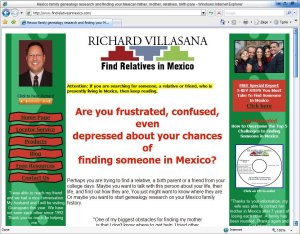
Click on image to enlarge
Photos: FindRelativesInMexico.com
Since it was established 18 months ago, Chula Vista, California based FindRelativesInMexico.com has worked with 3,000 United States residents wanting to make contact with relatives in Mexico. Founded and owned by Richard Villasana, the website business relies on staff in the United States and Mexico. FindRelativesInMexico.com has worked with attorneys for child custody cases with a parent living in Mexico, foster agencies, and child services from around the country.
Since the website was redesigned recently by Juan Carlos Garcia, a Mexican graphic artist, there has been an increase in visitors from Mexico of more than 300 percent. The site is so popular with Spanish speakers a Spanish language version of the website is in the works.
“Soon, clients will be able to present their information, have it evaluated and be presented with the service that best fits their research level of ease or difficulty for under $40. We have taken our experience from working with over 3,000 clients and are preparing to launch a new system that will walk clients through the research process,” said Villasana.

Richard Villasana, owner, FindRelativesInMexico.com
“One of the greatest challenges facing people is not knowing what information they must have and then how to apply it. With the new system clients will only spend about ten minutes entering needed information compared to non-clients who spend months, even years searching with no guidance and no results. Clients will know the probability of successfully finding a person. For clients with complex issues, they will get the professional consulting needed to be reunited with someone in Mexico.”
Services range from $127 to $257 depending on the information clients provide on the person they want to find. The company researches records in Mexico to identify the person or a relative. Research varies from each case although most require access to government records that are not digitized. Average time for a search is about two weeks.
According to Villasana, finding a relative may be the key to locating a particular person. Relatives are often able to provide missing information on the person sought, especially in cases where the person has moved to another part of Mexico. Villasana is a professional speaker and president of The Mexico Guru. He authored The Insider’s Guide to Doing Business in Mexico.
“Search Engine Marketing to Hispanics” audio recording

Presenter Matias Perel, founder and president, Latin3
Find out about
- The 16 million Latino online users
- Types of online access among Hispanics
- Latino online user language preferences
- What they do online
- Usage by age
- Income levels among Hispanics who visit the Internet
- Internet use by Hispanics
Click here for information on “Search Engine Marketing to Hispanics”
Posted by Elena del Valle on October 30, 2007

Ana Ondina Martínez, co-chair, IBM La Familia Technology Week
Photo: IBM
During IBM’s recent seventh annual La Familia Technology Week, the company reached out to Hispanic business owners with a free toolkit for small businesses promoted to spur economic development and job growth. La Familia Technology Week is a national public awareness campaign designed to inform Hispanics of the value of science and technology to access educational, employment and entrepreneurial resources.
As part of the program, IBM planned to expand its ¡TradúceloAhora! grant program to over 200 schools and non-profit organization in North America and Latin America. The idea behind the program is to enhance communication between Spanish-only speaking families and school and other officials who speak English. IBM also planned to donate Reading Companion, an interactive web-based technology designed to improve literacy skills, to Hispanic populations.
IBM is a presenting sponsor of the program along with Career Communications Group. The company plans to feature the Small Business Toolkit, ¡TradúceloAhora! and Reading Companion at dozens of La Familia workshops, cyber cafes and technology open houses at schools, universities churches, community organizations, and science centers across the United States.
“IBM’s involvement in La Familia reflects the company’s commitment to the communities in which it does business,” said Ana Ondina Martinez, territory director, Small Medium Business, IBM and a La Familia Technology Week co-chair. “We want to make sure that Hispanic youth have the skills they need to excel as students and to hopefully, join the next generation of innovators, scientists and engineers. We want more Hispanic entrepreneurs to have tools that will help them manage and grow successful firms that will help fuel our economy. We want to make it easier for Spanish-only speaking adults and seniors to access career opportunities and vital services. For this to be a truly collaborative society, everyone must be able to contribute. La Familia is like an engraved invitation encouraging members of Hispanic communities to come, see and find their place in the Digital Age.”
IBM launched the new Small Business Toolkit in July 2007 with the International Finance Corporation, the private sector arm of the World Bank. It is a free online portal developed to provide small business owners in the U.S. and emerging markets around the world business information, tools and training services usually reserved for Fortune 1000 Companies.
“Best in Class Hispanic Strategies” audio recording


Presenters Carlos Santiago and Derene Allen
-
Find out what makes 25 percent of the top 500 Hispanic market advertisers out perform the remaining companies
-
Discover what questions to ask, steps to take to be a Best in Class company
Click here to buy “Best in Class Hispanic Strategies” audio recording
Small Business Administration information indicates there are nearly 2 million Hispanic-owned businesses in the U.S. and there may be 3.2 million by 2010. The Small Business Toolkit is meant to help businesses grow by providing them information useful in implementing sustainable business practices in financing, accounting, international business, marketing, legal matters and human resources. It was also designed to provide an online forum with on-line conferencing, blog capability, group calendars, survey builders, and a multilingual business directory.
According to promotional materials, leveraging an enhanced version of IBM’s WebSphere technology, ¡TradúceloAhora! is designed to bridge the communications gap between Spanish and English. ¡TradúceloAhora! translates e-mails bi-directionally (English-to-Spanish and Spanish-to-English). It also translates websites automatically from English to Spanish, enabling Spanish-only speaking families to communicate with English speaking officials at their children’s schools and access information about employment opportunities and key services.
Another tool, Reading Companion, was developed by IBM researchers in partnership with teachers in IBM partner schools and not-for-profit organizations. It uses speech-recognition technology that “listens” and provides individualized feedback to the user, enabling readers to practice their pronunciation as they acquire reading skills. IBM established a $2 million grant to donate Reading Companion to more than 220 schools and nonprofit organizations around the world. There was no information available on the number expected to reach U.S. Hispanics.
“IBM’s focus is business to business versus selling to consumers, hence it does not track its clients by ethnicity. Recognizing, however, that U.S. Hispanic purchasing power is roughly $700 billion and that companies owned by Hispanics are one of the nation’s fastest growing business segments, IBM recognizes that Hispanic owned businesses are strategic clients that are key to the company’s growth,” said Ondina Martinez. “In 1997, IBM established the Market Development Group to ensure that businesses owned by Hispanics and other constituent groups recognize that IBM wants to partner with them, and that they understand how technology can help them manager and grow their businesses. La Familia Technology Week falls under the auspices of IBM global Workforce Diversity and Corporate Citizenship & Corporate Affairs.”
According to the IBM website, in 2006 IBM’s annual revenue was $91.4 billion with a net income of $9.4 billion and total assets of $103.2 billion. There were 133,973 employees in the United States of which 5,609 were Hispanic. In 2005, the Hispanic Association on Corporate Responsibility ranked IBM the number one Fortune 100 company for Hispanics.
Target Latinos effectively by anticipating changes in the market with
“Hispanic Projections with 2007-08 update” audio recording

Presenter Roger Selbert, Ph.D.
Find out
- About Latino buying power growth in the future
- How Latino market growth compares with other markets in the U.S.
- What drives the rise of Latino economic clout
- Who should target the Latino market
- What is the size of the Hispanic affluent market
- If the luxury Latino market is growing
Stay ahead of your competion with “Hispanic Projections”
Posted by Elena del Valle on October 25, 2007
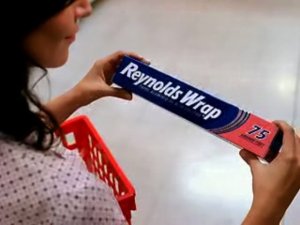
A scene from the new commercial
Photo and video: Bromley Communications
Reynolds Wrap Aluminum Foil recently began airing Spanish language television and radio ads in the United States, Puerto Rico, Mexico and Panama, part of a campaign scheduled to run from October to December of this year. In the United States, the ads will be broadcast in Houston, Los Angeles and Miami during the initial launch stage. Scroll down to watch the ad video.
Produced by Bromley Communications, the focus of the 15 and 30 second television ads and 60 second radio ads is on the strength of the foil. Because the foil is stronger than other brands, the ad argues, it means the lady of the house will use less and save money. The ads feature examples of occasions where “only Reynolds Wrap will do.”
“We had faith that Bromley hit the nail on the head with this strategy,” said Charles Kinsolving, senior brand manager, Reynolds Wrap. “Over the last few years the agency has provided outstanding guidance in the Hispanic marketing area, as evidenced in this new campaign.”
“Emotional Branding: How to capture the heart and mind of the Hispanic consumer” audio recording


“Emotional Branding” was recorded January 2007 during the Strategic Research Institute 13th Annual Blockbuster Marketing to U.S. Hispanic and Latin America conference in Miami, Florida. Receive a free downloadable copy by completing our Visitor Survey.
Click here for your free copy of Emotional Branding
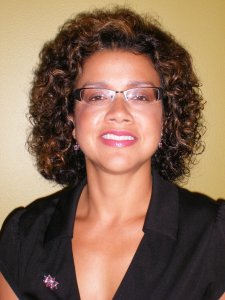
Luisa Donis, group account director, Bromley Communications
“The underlying insights that are captured in this work are universal for Hispanics and Latin Americans, which is why the spots work beautifully in regions that are so diverse,” said Luisa Donis, group account director at Bromley Communications. “Our creative team understood the high value that Latin households have for everything related to their kitchen, meals and food safety and that comes across in the work.”
Since 2006, Bromley Communications has been the Hispanic agency of record for Alcoa Consumer Products, makers of Reynolds Wrap Aluminum Foil. Ron Landreth, group creative director at Bromley, was responsible for the concept and execution of the campaign. Ignacio Guzman was the associate creative director and Magaly Chocano was producer in charge supervising Milagro Films, an independent production company.
Headquartered are in San Antonio, Texas, Bromley Communications is a full-service integrated communications agency offering advertising, public relations and promotions services targeted to the Hispanic consumer. AstraZeneca, Procter & Gamble, Burger King, The National Pork Board, Payless ShoeSource, Coors, General Mills, and Nestlé USA are Bromley Communications clients.
Alcoa Consumer Products, a business of Alcoa Inc., is a leader in the consumer packaged goods industry, supplying foil, film and paper products to the retail and foodservice sectors. No information was available on Reynolds’ Hispanic market penetration. Other Reynolds Consumer Products include Reynolds Wrap Aluminum Foil, Reynolds Plastic Wrap and Reynolds Cut-Rite Wax Paper.
Click on the play button to watch the Reynold’s Wrap ad Piénsalo:
“Best in Class Hispanic Strategies” audio recording


Presenters Carlos Santiago and Derene Allen
-
Find out what makes 25 percent of the top 500 Hispanic market advertisers out perform the remaining companies
-
Discover what questions to ask, steps to take to be a Best in Class company
Click here to buy “Best in Class Hispanic Strategies” audio recording
Posted by Elena del Valle on October 18, 2007
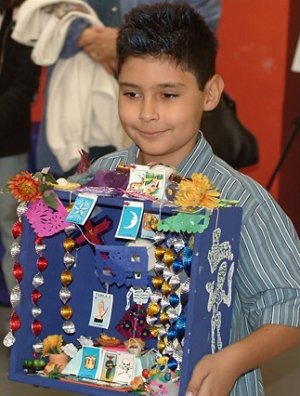
One of the winners of the 2005 altar-building contest in Los Angeles
Photo: Wonka
While Jack-o-lanterns, skeletons and broomsticks adorn the doors and windows of some homes, community centers, schools, museums and arts organizations, in the Mexican-American community, the décor is slightly different, with traditional and personal touches. Some build Día de los Muertos (Day of the Dead) altars in honor of departed relatives, musicians, artists, cultural heroes or leaders. The altars, designed to celebrate a person’s life and contributions to their family or community, may feature favorite belongings of the deceased, sugar skulls and sweets.
In an effort to target Latino youth, Nestlé launched the Wonka Arte program in 2005 with free workshops in Los Angeles to teach kids how to build altars. Wonka partnered with Plaza de la Raza, a community based arts organization in Los Angeles, to offer workshops, a contest and an awards ceremony. This year, the program extended its reach to retail locations and the online world. Still in partnership with Plaza de la Raza, the Wonka sponsored program includes a contest for the best altars, an online sweepstakes and free sugar skull building workshops for children at retail locations.
Wonka.com’s new interactive features allow kids to learn about the Day of the Dead while showing off their altar-building talents in the virtual world for a chance to win prizes. Children are invited to build altars online incorporating virtual Wonka candy and representations of traditional Day of the Dead components such as sugar skulls and cempasuchil (marigold) flowers.
“Latino Family Dynamics” audio recording


Brenda Hurley and Liria Barbosa
Discuss
- Latino purchasing habits and products they favor
- Latino family characteristics
- Latinos and extended families
- Division of duties, responsibilities within the family
- Who is the decision maker in the Latino family
- Who is the information provider in the Latino family
Click here to find out about Latino purchasing habits and “Latino Family Dynamics”
“We understand the importance of the Day of the Dead holiday to Hispanic youth and their families,” said Elizabeth Vanemburg, marketing manager of Wonka. “We want to encourage kids to observe, learn more about the holiday and participate in the altar-building tradition on Wonka.com. No experience is necessary. All you need is a bit of imagination and access to a computer.”
Children 16 and younger can submit their online altar for a chance to win a laptop computer, mp3 player and a $100 gift card to download music, as well as $120 toward Internet access.
Promotional efforts to inform parents and children about the online portion of the program include a press release, fliers and online advertising. The public relations team is also using calendar and public service announcements, press releases and media alerts to inform Los Angeles residents about the workshop, contest and ceremony.
Día de los Muertos is a Pre-Columbian holiday traditionally observed in Mexico November 1 and 2 to honor loved ones who have passed away by celebrating their lives. According to the Wonka website, some believe the departed join the living during those days to celebrate together. The celebration involves making homemade altars with items that brought happiness to the departed individual. Sugar skulls, candies, photographs, papel picado, candles, incense, and marigold flowers often decorate the altars. Some altars have evolved to include celebrities, musicians, artists, and even pets.
Nestlé USA sells food products and candy including Wonka, Sweetarts, Nerds, and Runts to name a few. Nestlé USA had sales of $8.5 billion in 2006. Its parent company is Nestlé S.A. of Vevey, Switzerland, one of the world’s largest food companies with sales of $79 billion.
Posted by Elena del Valle on October 11, 2007

Jim Vella, president, Ford Motor Company Fund and Community Services
Photo: Ford Motor Company Fund
In celebration of National Hispanic Heritage Month, the Ford Motor Company Fund and Community Services are supporting BizFest, a leadership development and entrepreneurship training program created by the United States Hispanic Chamber of Commerce Foundation that brings together Hispanic high school students from across the country to compete for scholarships, prizes and long-term business support.
The Fund will also reach out to middle school children through the Ford Hispanic Heritage Art Program, a national partnership with Newspapers in Education designed to sharpen student’s art and writing skills as they learn about Hispanic and American history. The Fund was a sponsor of the National Hispanic Foundation for the Arts (NHFA) Noche de Gala in Washington, D.C. to raise funds for graduate scholarships to Latino students.
“Ford has a long history of partnering and working with the Hispanic community. We are proud to continue our tradition of creating and supporting educational and leadership opportunities in the Hispanic community while promoting cross-cultural exchange,” said Jim Vella, president, Ford Motor Company Fund and Community Services.
Listen to Cesar Melgoza discuss
“Changing Latino Landscape” audio recording

Presenter Cesar Melgoza, managing director, Latin Force Group
Find out about
• How demographic, social, political and economic factors affect Latinos
• Number of Hispanics in U.S.
• Hispanics as a percent of the mainstream population
• Number of Puerto Ricans in Puerto Rico
• Hispanics, including Puerto Rico, as a percent of U.S. mainstream
• Number of Asians and African Americans
• Estimated size of Hispanic market by 2012
• Percentage growth of new Hispanics per year
• Number of counties where Latinos are majority
• Areas of significant Latino growth
• Area of U.S. with a 950 percent Latino growth
• Role of acculturation
• Hispanicity segmentation
Click here for information on the Changing Latino Landscape
Ford Motor Company and its philanthropic arm, Ford Motor Company Fund and Community Services, boast of a 30 year collaborative relationship with the Hispanic community. Established in 1949 and made possible by Ford Motor Company profits, Ford Motor Company Fund supports initiatives and institutions that foster innovative education, auto-related safety, and American heritage and legacy.
In the past, Ford has supported, among others, the Alameda National Center for Latino Arts and Culture, Our Journeys/Our Stories: Portraits of Latino Achievement, Corazon de mi vida, Picture Me Safe & Secure, Driving Skills for Life, Retratos: 2,000 Years of Latin American Portraits, Ford Partnership for Advanced Studies, National Association of Hispanic Journalists and National Association of Hispanic Publications Latino Press Fellowship and several education and scholarship programs.
Additional national Hispanic organizations the Fund supports include: League of United Latin American Citizens (LULAC), National Council of La Raza (NCLR), National Hispanic Caucus of State Legislators (NHCSL), National Hispanic Foundation for the Arts (NHFA), and National Puerto Rican Coalition (NPRC).
Posted by Elena del Valle on October 10, 2007
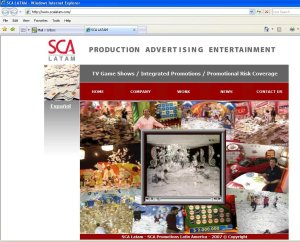
Click on image to enlarge
Photos: Martin Giovaneli, SCA Latam
SCA Promotions and Entertainment Production Group (EPG) established a new company, SCA Latam, to bring the game show concept to brands and agencies in the United States and Canada. SCA Promotions is a Dallas, Texas provider of promotional risk coverage for contests, games and events and Entertainment Production Group is a Buenos Aires, Argentina-based game show producer.
Hoping to emulate its sister company’s past success in Latin America, Africa and Europe, the new company will focus on the Hispanic market exclusively at the beginning. Promotional efforts will consist of announcements in the SCA Promotions newsletter; and outreach to the parent company’s existing contacts and to Spanish language ad agencies in the United States. Executives hope SCA Latam will sign its first deal at the end of this year.
“Our goal is to bring our knowledge and success with the TV game shows to the U.S. and Canada first targeting the Hispanic market in the U.S. and then going after the entire market sector,” said Martin Giovaneli, a representative for EPG who is overseeing the SCA Latam initiative.
The idea is for SCA Latam’s big money game show promotions to enable brands to drive consumer behavior on a mass scale by giving consumers the chance to play for a million dollars or more on a live two- to six-minute TV game show aired on local and network television. Although initial efforts will be in Spanish only, executives are considering English outreach as well. Initially, the company will have six staff members in the United States and four in Argentina.
While each promotion is customized to meet the needs of the brand, the basic promotion format remains the same. A brand sponsors the game show, which can feature any big-money prizes desired, and enables consumers to enter for a chance to play on the game show via SMS or mailing in proofs of purchase. The game show is aired daily during the promotion period and a winning entry is selected on a random basis live on the air during each show. The company contacts the person selected at random by phone and allows him or her to play for the prizes.
“Best in Class Hispanic Strategies” audio recording


Presenters Carlos Santiago and Derene Allen
-
Find out what makes 25 percent of the top 500 Hispanic market advertisers out perform the remaining companies
-
Discover what questions to ask, steps to take to be a Best in Class company
Click here for more on“Best in Class Hispanic Strategies” audio recording

Martin Giovaneli
“We use different games depending on the promotion designed for the brand,” said Giovaneli. “For example, we might feature a prize board containing 24 numbers and if the contestant selects the three numbers that reveal the brand’s logo, he or she wins a million dollars. One of the most important components is that contestants always win a big prize. If they don’t win the million dollar grand prize, they win a second or third place prize, such as $100,000 or a new car.
It really is a win, win, win. The consumer has the chance to win a life-changing prize and always walks away with something big. The TV network wins because the game show increases its ratings and revenues; and the brand sponsor wins because the promotion drives mass sales, engages consumers, and captures valuable customer information. And because SCA Latam assumes the promotional risk, the participating brand pays a fixed cost for the promotion that amounts to a fraction of the actual grand prize money being offered. When a big win occurs, SCA Latam pays the brand the grand prize so they can award the winner.”
According to promotional materials, the two companies have worked together for 12 years, helping brands and their agencies launch more than 4,000 games show episodes in 19 countries, and award more than $32 million in cash and prizes. The game show promotion, utilized by Coca Cola, Unilever, Energizer, Nabisco, Colgate, Nestle, Procter & Gamble, PepsiCo, and SAB Miller worldwide, has been so successful that it landed in the Guinness World Records for driving 35 million entries in a single season.
SCA Latam, a subsidiary of Dallas-based SCA Promotions, will specialize in driving mass consumer response through large-money TV game show promotions. Described as a leading provider of promotional risk coverage for contests, games and events founded in 1986, SCA Promotions has covered billions of dollars and paid out over $153 million in cash and prizes for sales and consumer product promotions, lottery and casino jackpots, radio contests, and direct mail, Internet and sports promotions. SCA Promotions has offices in Dallas, London and Calgary.
“Segmentation by Level of Acculturation” audio recording

Presenter Miguel Gomez Winebrenner
Discusses
- Assimilation versus acculturation
- Factors that affect Latino acculturation
- How to know if someone is acculturated
- Number of years necessary for acculturation
- Effects of immigration debate on acculturation
- Three main ways of segmenting Latinos
Click here for details about “Segmentation by Level of Acculturation”






































